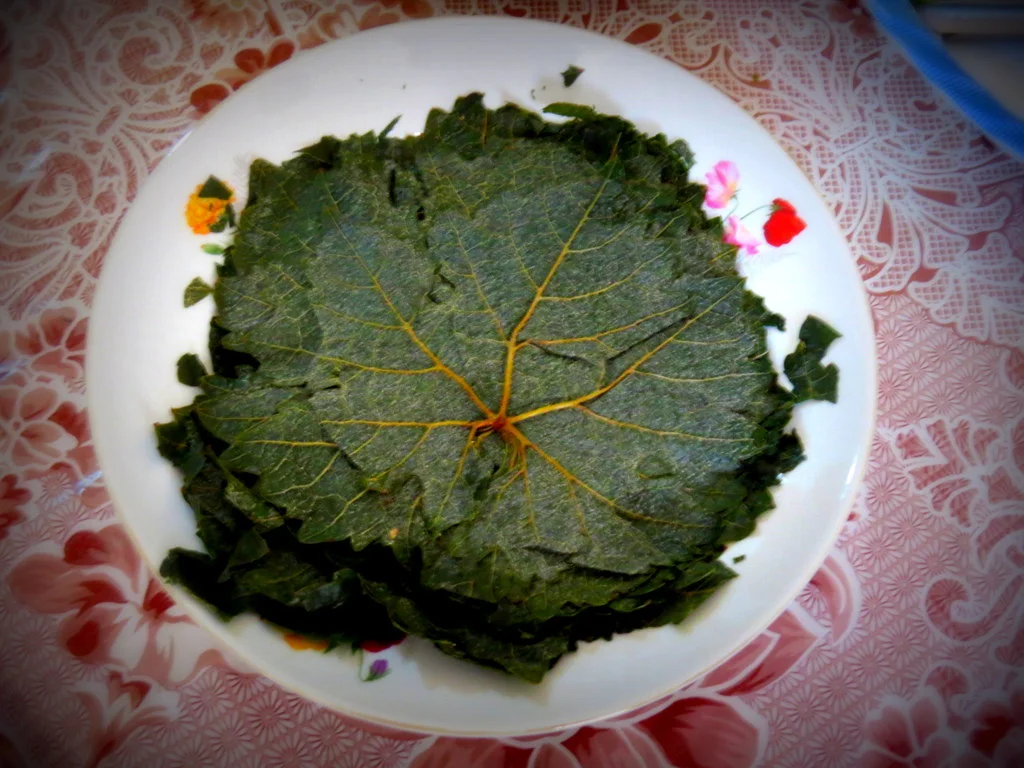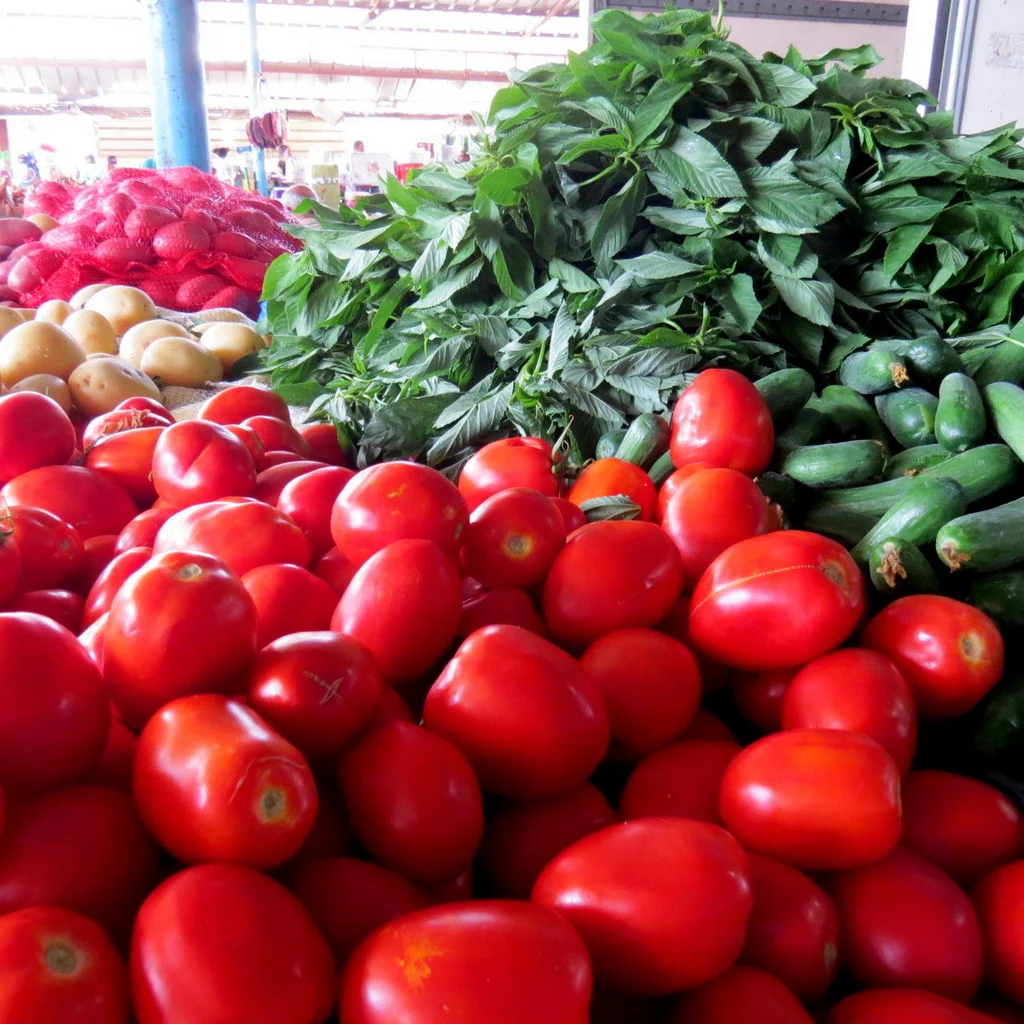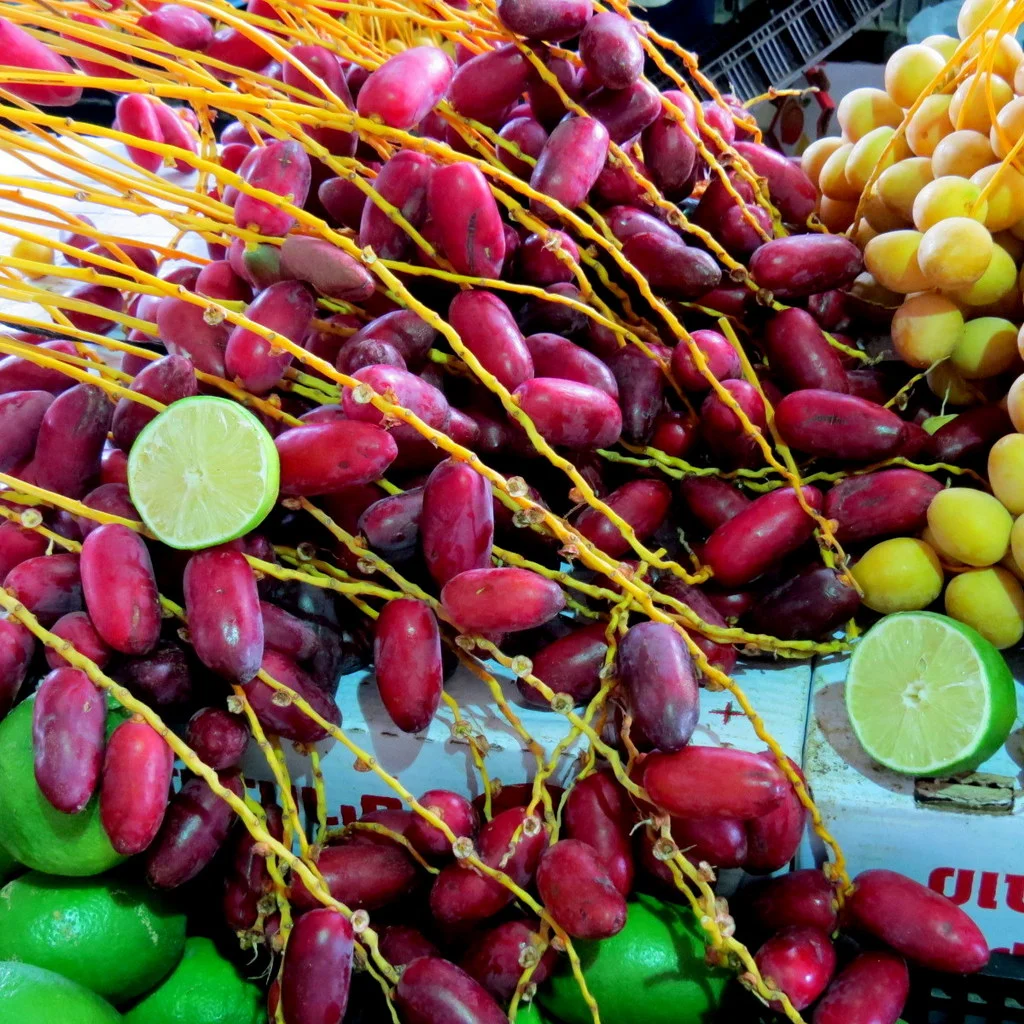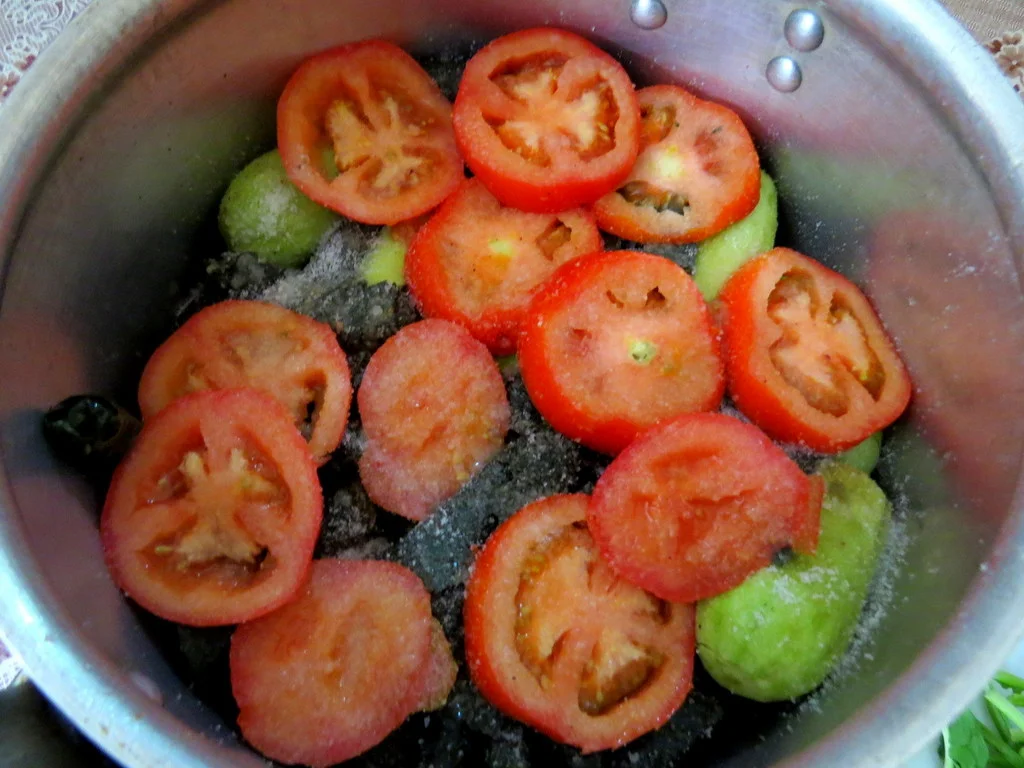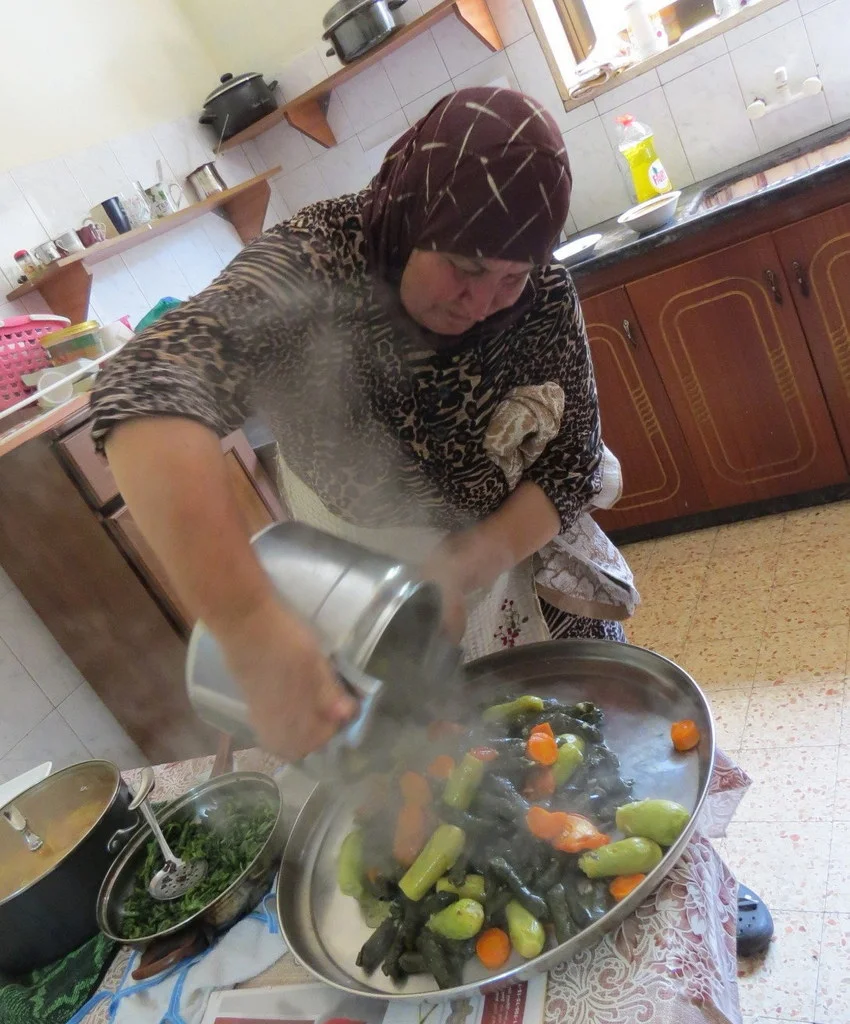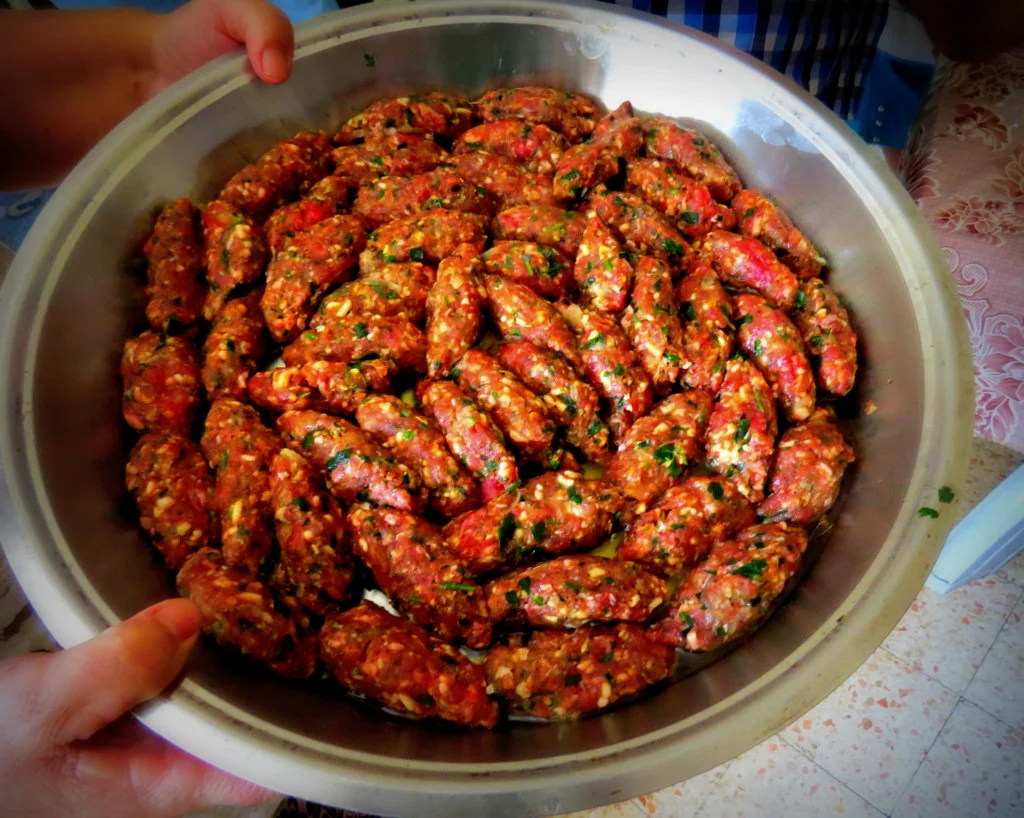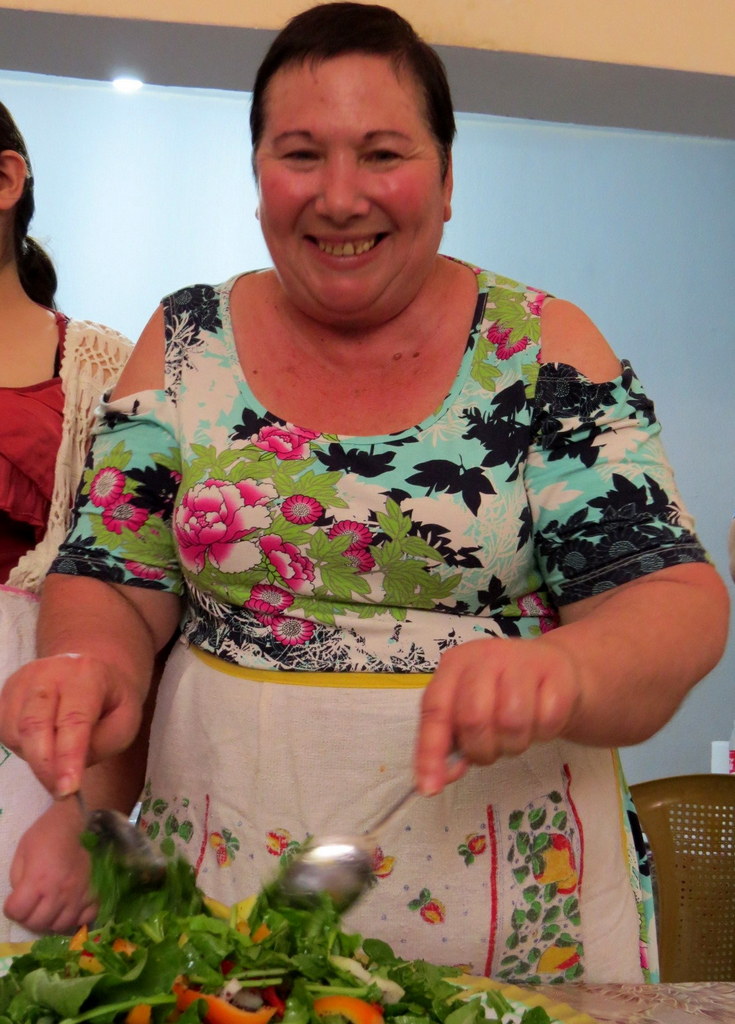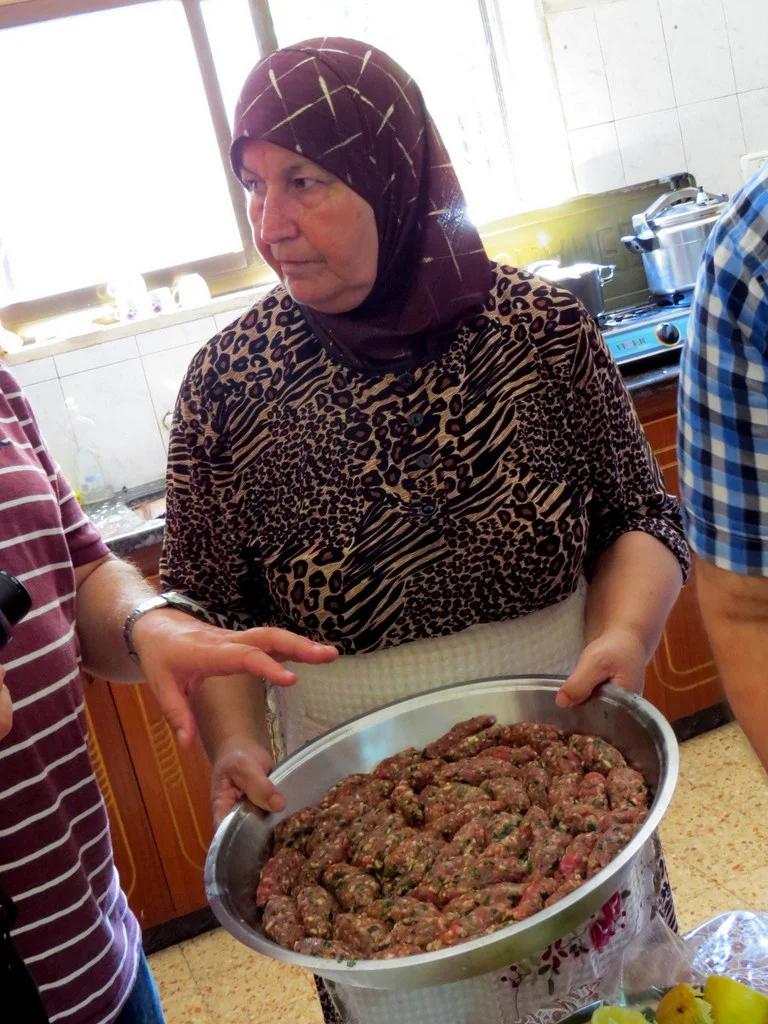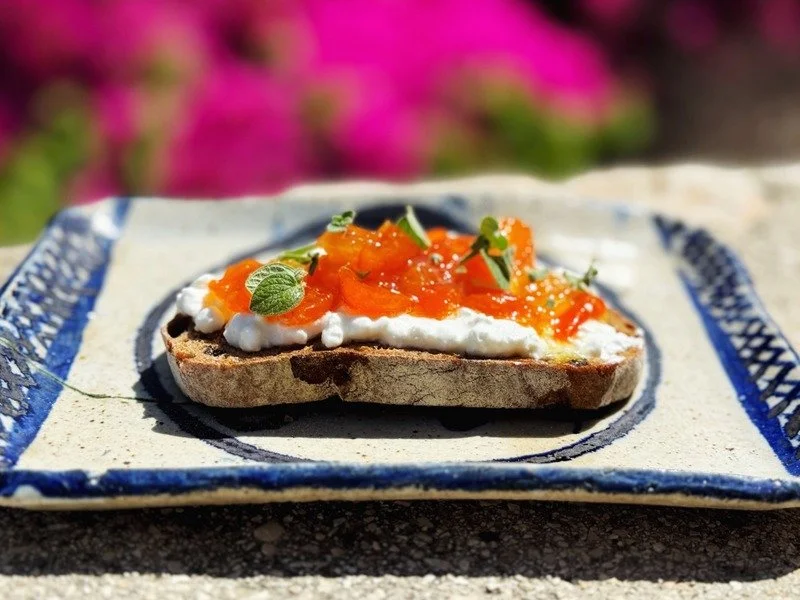POLITICS INTRUDES
This is the first time since beginning this blog 5 months ago when I have not been able to cook or to write. Or basically to do anything except work and sleep. There is simply too much news ex Jerusalem, most of it bad, and if you work for a 24 hour satellite TV news station, like I do, when there's a breaking story your feet don’t touch the ground.
So at the end of this period, 15 days into this wave of violence, there are dead on both sides, as well as fear and despair. Most of the Palestinian attackers are young, and most are killed during the attacks, in which they use knives, a screwdriver and even a potato peeler to stab Israelis. Dozens more on both sides have been injured. Often victim and attacker are being treated in the same hospital.
In the interests of co-existence, and hope, I am grabbing a spare hour to write up a wonderful cooking class I did over the summer, where an Arab woman invited Israelis into her home to teach them how to prepare some of her traditional dishes.
Galilee Cooking class
It was a hot summer morning when I joined a group of 8 in the village of Arrabe in the Galilee, Israelis and some American visitors.
There's been a farming settlement here going back thousands of years. Today Arrabe has a population 28,000, mostly Muslim, with a small enclave of Christians. Like many of the neighbouring communities, Arrabe is an Arab village inside Israel with one difference - it's famous for having produced more doctors than any other place in Israel. Yes, you heard right. Jewish mothers eat your heart out!
Our hostess Nawal Darawshe says many people here still work in agriculture, including women like her who plant, harvest and sell local veges such as artichokes in order to put their children through university.
Nawal Darawshe
MARKETS
The class included a market tour, which was almost as much fun as the cooking!
There were vegetables such as gourds, thistles and jarjir and olesh, local bitter salad leaves. (We learnt to prepare delicious dishes with these vegetables.)
The branches of yellow fruit below are dates.
There are supermarkets in the area, but many locals still prefer to shop at the markets. Locally grown olive oil, honey and specialities like thin, lacy Druze pita bread and labne cheese and home cured pickles and olives are all available here, along with spices and seasonal fruit and veg.
NAWAL DAWARSHE
Nawal Darawshe, mother, grandmother and gifted home cook is teaching us to prepare six traditional Galilee dishes. Nawal means 'gift from the universe' in Arabic, but as is traditional across the Arab world, she is known as Um Saleh: 'Mother of (first born son) Saleh'.
Um Saleh was born in Arrabe, married here, and has lived here all her life. This is the view from her window, with the cars of her Israeli guests in the street, and her front room with her home-baked date biscuits, maamoul, on the table
Um Saleh went back to school as an adult to learn Hebrew so she could communicate with Israelis. She believes firmly in coexistence and is happy to be hosting Jewish Israelis in her home. Her kitchen is a large room, low on gadgets. The welcome is warm and the aromas spicy.
She has cooked here everyday of her married life, but since joining this project she says proudly, using the word in English, “I am a businesswoman.”
Remembering that relaxed Saturday now, with violent protests taking place in the same area, fills me with wonder, and brings a moment of peace.
GALILEAT
The class was organized by Paul Nirens, an old mate from Australia who has lived in the Galilee for the past 25 years, and has set up a business called Galileat, which in addition to bringing Israelis to Arab villages to learn about their neighbours’ food and their lives, also empowers local Arab women.
You learn, do hands on cooking and of course eating, and spend a great day, becoming familiar with regional produce and dishes. And there's that undeniable connection that occurs when you cook and eat with someone... food breaking down barriers.
MENU
We prepared 5 dishes. Most were vegetarian. All were delicious. The vege dishes, using local vegetables including gourds and wild thistles and bitter grasses and greens, were outstanding.
The recipes below are for 2 classics: stuffed vine leaves and kebab cooked in tahini.
I'm including the recipe for stuffed vine leaves because it's also become an integral part of the modern Israeli kitchen, and our Food is Love grandmothers from Greece and Libya prepare it too. But as with many classics, each version is slightly different.
The Galilee way with vine leaves is to roll the parcels very thinly, so you really taste the leaf. It's quite different to the more chunky dolmades that Greeks make. The Galilee stuffed vine leaf is also more salty and spicy as well as more leafy.
It's a winner!
Note: This dish is vegetarian, but there is the option for adding meat.
Stuffed Vine Leaves and Zucchinis
Serves a large party as part of a first mezze course
INGREDIENTS
- 45 vine leaves and 8 small zucchinis
- 2 cups white rice, rinsed
- 1 tablespoon chicken soup powder
- 1 tablespoon cinnamon
- 1 tablespoon baharat
- 1 teaspoon ground black pepper
- ½ teaspoon dried chilli flakes – optional
- 4 tomatoes, 2 skinned and 2 with skin on
- ½ cup olive oil
- 1 carrot, sliced
- Meat option: you can also add 300 grams / 10 oz minced beef or chicken
METHOD
1. Carefully hollow out zucchinis with a sharp knife or special rounded blade. Galileat gave us all a gift of one of these - very useful! You want it as thin as you can get it without perforating the walls. (Throw out the flesh, or save for another dish)
2. Put rice into a bowl. Grate in the 2 skinned tomatoes, then mix in all remaining spices and oil. Reserve the carrots and the tomatoes with skin on.
3. Reserve 5 vine leaves for lining the pot. The rest are for filling. Hold a vine leaf flat on the palm of your hand or on a chopping board. The shiny side should be placed downwards and the veined side up. Add ½ teaspoon of rice mixture. Yes, that little! For the thinner Palestinian vine leaf that is really all you need. Fold in the sides and roll up the vine leaf. Repeat with the remaining vine leaves.
4. Half fill the cored zucchinis with the same rice mixture. Do not over-fill! The rice expands during cooking.
5. To prevent the vege parcels from sticking to the bottom of the pan, line it with 5 reserved vine leaves. You can also add sliced carrots or tomatoes here, or at the end, on top. These also add flavour and colour when you pour the dish out onto a plate. Pack rolled vine leaves and stuffed zucchinis into the pot. Um Saleh likes slicing the remaining 2 tomatoes on the top when it's finished. And yes that is salt in the photo. Um Saleh has a liberal hand with the salt, and the taste is wonderful.
6. During this class, Um Saleh used a pressure cooker so it would all go more quickly. But you can also use an ordinary pot. Fill the pot with water to cover the vine leaves and zucchini. Place an inverted plate over the vegetables so as to prevent them floating to the top and unravelling. Bring to boil and reduce heat. Cook, covered and check occasionally to see if there's enough water. Add more water if necessary. Cook for 40-60 minutes.
The second dish is another Middle Eastern classic, Sinye, beef kebabs cooked in tahini. Good enough to make vegetarians return to eating meat!
Um Saleh’s is easily one of the tastiest versions of this popular dish I've ever had.
Sinye
serves 20 as part of a meal with other courses
INGREDIENTS
Kebabs
- I kg / 2 lbs minced beef. The meat should not be minced too fine. The coarser the better.
- 1 onion, diced small or grated into the meat
- 1 heaped teaspoon minced garlic
- ½ large bunch parsley, chopped fine
- ¼ large bunch mint, chopped fine
- 1 teaspoon cumin
- 1 teaspoon baharat
- Salt and freshly ground black pepper
- Parsley for garnish
Tahini
- 2 cups tehina (whole-grain tehina is best)
- Juice 2 lemons
- 1.5 cups very cold water
- ½ teaspoon of salt.
NOTE: It is essential to make the tahini from scratch. Store bought, ready-to-eat tehina will separate in cooking and won't give the desired result.
METHOD
1. Mix all the kebab ingredients together well. Let rest for at least 30 minutes.
2. Meanwhile, prepare the tahini. Put all the ingredients in a bowl, using only one cup of the water to start, and stir with a spoon or whisk. The mixture might be lumpy at first. Not to worry. Keep stirring.
If it's too thick, add a little more cold water. The consistency should be quite thin. It will thicken with cooking. Correct the taste. It should be quite lemony. Actually, very lemony. Set aside while you make the kebabs.
3. Roll the meat into kebabs, about 5 cm in length and not much thicker than the vine leaves. Place on a lightly oiled oven tray. Um Saleh put hers in a lovely round pattern. Brush olive oil over the top of the meat. Bake in a 170˚ oven 15 minutes.
4. Remove pan from the oven. Pour off excess oil. Um Saleh drained an enormous amount of oil, I would estimate it at about 1 - 2 cups. When you've drained the oil, pour the tahini over the meat. Shake the pan a little so the tahini seeps in between all the kebabs. Return to the oven for another 5-8 minutes. You can also finish this second stage of cooking, with the tahini, on top of the stove, over a med-high flame.
Garnish with chopped parsley.
SPICES AND ACCOLADES
Everything Um Saleh prepared was really, really flavourful.
It is partly the quality of the ingredients. The olive oil which is used in large quantities in the Galilee kitchen, as if it were a spice, is grown and pressed locally. The tahini is also locally produced, from 100 per cent hulled sesame seeds. No filler of any kind. Um Saleh is also particular about spices, mixing her own baharat.
During the market tour, I bought the most delicious sumac I've tasted and a wonderful aniseedy spice called Yassoun. (Maybe it was Rassoun? I will have to check with Paul.) It was so intensely flavourful, like little pellets of Pernod, that I use it in everything and want to buy all my spices up there from now on.
And good news for Paul's business. In recognition of the great experience it offers, Galileat has this week been been awarded a Certificate of Excellence by Tripadvisor. Way to go Paul! Naturally, he's thrilled.
Paul Nirens with some of his cooks. He cooked for them when he won the Trip Advisor award!
“In appreciation, I invited all my hosts to my home so I could cook for them! It was my way of saying thank you and that this award belongs to all of us in the Galileat family. I am humbled by the overwhelming positive responses I have received from my customers in the two and a half years since I started this wonderful journey and particularly their enthusiasm for having been exposed to an authentic slice of Galilean food and culture,” says Paul Nirens.


